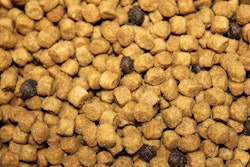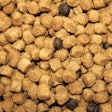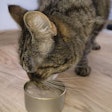
Olives have a long history of use in healthy human foods and a short history being fed to cats in social media videos. While online claims that olives affect cats like catnip may not have scientific backing, olive extract holds potential as a novel ingredient for cat food. Researchers with Kemin Industries evaluated how olive extract influenced cats’ kibble consumption. They published their research in the journal Pets.
For their experiment, the scientists incorporated olive extract into two palatants, one dry and one liquid. Olive extract inclusion level ranged from 15 to 150 ppm in the liquid format and 50 to 600 ppm for the dry kibble.
To assess palatability, the researchers conducted feeding trials with 20 adult cats. Intake ratio, first approach and first choice were used to compare olive extract-containing diets to a control kibble.
- No negative impact on consumption: Across all variations, cats consumed olive extract diets at levels statistically similar to controls.
- Single significant preference: The only statistically significant preference was seen at 200 ppm olive extract applied via dry palatant. All other inclusion levels did not differ significantly from control diets.
- Safe inclusion thresholds: Olive extracts could be included at up to 150 ppm in liquid and 600 ppm in dry palatant applications without deterring cat food consumption.
The scientists analyzed the olive extract, identifying 27 volatile compounds. These compounds produced earthy, fruity and herbal aromas, several of which overlapped with those found in whole olives, olive oil and even catnip.
Pet food formulation with olive extract
Although olive extract includes bitter compounds, neither appeared to negatively affect acceptance at the tested concentrations. Differences in palatant format, base kibble type and fat content may have influenced how olive extract’s aroma and flavor profile were perceived by the cats.
While findings suggest that olive extract can be incorporated into feline diets, the study’s authors recommended longer-term studies to evaluate sustained acceptance and potential health effects.
For pet food manufacturers seeking novel functional ingredients with consumer appeal, olive extract may offer an opportunity to introduce a plant-based additive that complements wellness-positioned formulations. While OE alone may not enhance palatability, it can be used without compromising it.
As consumer focus on pet health grows, olive extract could play a role as a novel ingredient.


















